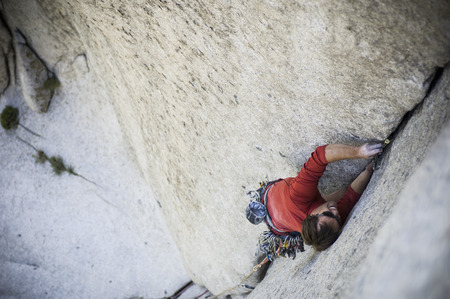1. The Layering Basics: Understanding the System
When it comes to hiking in America’s ever-changing outdoors, knowing how to dress properly can make or break your trip. Whether you’re trekking through the humid forests of the Pacific Northwest, scrambling up rocky paths in Colorado, or exploring the dry deserts of Arizona, layering is key. But what exactly is this “layering system” that everyone talks about—and why does it matter so much?
Breaking Down the Layers
The idea behind layering is simple: you wear a few specific pieces of clothing that each have their own job. This gives you the flexibility to add or remove layers as conditions change, keeping you comfortable and safe no matter what Mother Nature throws at you.
| Layer | Main Purpose | Common American Example |
|---|---|---|
| Base Layer | Wicks sweat away from your skin to keep you dry | Moisture-wicking T-shirt or thermal top (synthetic or merino wool) |
| Mid Layer | Adds insulation to trap body heat | Fleece jacket, down vest, or synthetic insulated hoodie |
| Outer Layer (Shell) | Protects against wind, rain, and snow | Waterproof-breathable rain jacket or windbreaker |
Why Is Layering So Important in the U.S.?
The United States has some of the most diverse climates and landscapes on Earth. You could start a hike in chilly mountain air and finish in warm sunshine—or get caught in an unexpected rainstorm out West. Layering helps American hikers adapt fast without missing a beat. It’s not just about comfort; staying dry and warm can prevent hypothermia and other serious risks when you’re far from help.
Quick Tips for American Hikers
- Avoid Cotton: “Cotton kills” is a real saying among U.S. hikers because cotton holds onto moisture and can make you dangerously cold if temperatures drop.
- Think Versatile: Weather changes fast—especially in places like the Rockies or Appalachians—so bring layers even if the forecast looks good.
- No One-Size-Fits-All: Your perfect setup might look different depending on where you hike, but sticking to these basics will always give you a head start.
This foundational understanding sets you up to spot—and avoid—the most common mistakes American hikers make with their layering system.
2. Myth: More Layers Mean More Warmth
It’s a classic scene on American trails: hikers bundled up in as many shirts, fleeces, and jackets as they can find, hoping that more layers will keep out the cold. But here’s the truth—piling on clothing doesn’t always mean you’ll be warmer. In fact, too many layers can actually backfire and leave you feeling clammy, chilly, or even at risk for hypothermia if you start sweating and then cool off too quickly.
Why “More” Isn’t Always “Better”
Your body stays warm not by stacking clothes endlessly, but by trapping a comfortable amount of warm air close to your skin. Overdressing often leads to sweating—especially when climbing hills or hiking at a brisk pace. When sweat soaks your base layers, it can make you feel much colder once you stop moving or the temperature drops.
The Smart Layering Strategy
Instead of grabbing every jacket in your closet, focus on three core layers:
| Layer | Main Purpose | Common Materials |
|---|---|---|
| Base Layer | Wicks moisture away from skin | Synthetic (polyester), merino wool |
| Mid Layer | Traps body heat for insulation | Fleece, lightweight down, synthetic fills |
| Outer Layer (Shell) | Blocks wind and rain | Nylon, Gore-Tex®, other waterproof/breathable fabrics |
How to Regulate Your Temperature Like a Pro
- Add or remove layers based on activity level: If you’re heading uphill or working hard, shed a layer before you start sweating.
- Avoid cotton: Cotton holds onto moisture and dries slowly, making you feel cold if you get sweaty.
- Pit zips and ventilation: Use jackets with vents so you can dump excess heat without stripping off your shell completely.
- Pace yourself: Hiking too fast in heavy layers increases sweat. Slow down if you feel yourself overheating.
The real secret isn’t about piling on more—it’s about picking the right combination and adjusting as conditions change. That way, you stay dry, warm, and comfortable all day on the trail.

3. Cotton Kills: Choosing the Right Fabrics
If you’ve hiked in the U.S., you’ve probably heard someone say “cotton kills.” This phrase is so common in American hiking circles for a good reason—wearing cotton on the trail can be a serious mistake. Let’s break down why cotton gets such a bad rap and what fabrics actually work best for America’s diverse outdoor environments.
Why Is Cotton So Dangerous for Hikers?
Cotton might be comfy for lounging at home, but it’s a disaster when you’re active outdoors. The main problem? Cotton holds onto moisture like sweat and rain, and it dries super slowly. When your clothes stay wet, your body loses heat fast. In cool or windy conditions—even in spring or fall—that can quickly lead to hypothermia. For American hikers exploring everything from misty Pacific Northwest forests to unpredictable Appalachian weather, this is no joke.
Fabric Comparison Table
| Fabric Type | Wicks Moisture? | Dries Quickly? | Keeps You Warm When Wet? | Best For |
|---|---|---|---|---|
| Cotton | No | No | No | Urban use, casual wear |
| Synthetics (Polyester/Nylon) | Yes | Yes | Somewhat | Hot/humid climates, high-intensity hikes |
| Wool (Merino) | Yes | Moderately | Yes | Cold weather, variable conditions |
The Best Choices for American Trails
Synthetics: Polyester and nylon fabrics are lightweight, wick away sweat, and dry in a flash. They’re ideal for steamy Southern summers or sweaty climbs out West. Plus, they’re affordable and easy to find at any outdoor retailer from REI to Walmart.
Merino Wool: Don’t think of grandma’s itchy sweaters! Modern merino wool is soft against your skin, fights odor naturally, and keeps you warm even if it gets damp. It’s perfect for chilly mountain mornings in Colorado or unpredictable spring days in New England.
Avoid These Common Layering Pitfalls
- No jeans or cotton tees: Even on a mild day, these can soak up sweat and chill you fast if the weather turns.
- Always check labels: Look for “moisture-wicking” or “quick-dry” features on shirts, base layers, and socks.
- Layer smart: Start with a synthetic or wool base layer close to your skin—save that favorite flannel for after the hike!
4. Fit Matters: Why Baggy or Tight Layers Don’t Work
When it comes to layering for a hike, Americans often lean toward two extremes: super baggy hoodies that feel cozy at home, or ultra-tight athletic gear inspired by pro athletes and gym culture. But while both styles are popular, neither is ideal for the trail.
The Problem with Baggy Layers
Oversized sweatshirts and loose jackets might be comfortable on the couch, but out in the wild, all that extra fabric can bunch up under your backpack straps, snag on branches, and trap cold air instead of keeping you warm. You’ll also notice that bulky layers make it harder to add or remove clothing efficiently as weather changes.
The Issue with Tight Layers
On the flip side, compression shirts and leggings hug your body so closely that they can restrict movement and limit airflow. When you’re working up a sweat climbing hills or scrambling over rocks, tight layers don’t allow moisture to escape well. This leads to dampness against your skin and chills once you stop moving.
Finding the Right Fit: What Works Best?
The sweet spot for hiking layers is a fit that’s “just right”—not too baggy, not too tight. Clothes should sit close to your body without restricting movement or feeling clingy. Here’s a quick guide:
| Layer Type | Too Baggy | Too Tight | Just Right |
|---|---|---|---|
| Base Layer | Bunches under other clothes; traps cold air | Restricts movement; poor moisture wicking | Snug but not constricting; allows sweat to wick away |
| Mid Layer | Adds bulk; difficult to layer over/under | Loses insulation value when compressed | Fits over base layer comfortably; traps warmth without squeezing |
| Outer Layer (Shell) | Catches wind; flaps around; leaks heat | Tight spots limit mobility and coverage | Covers other layers smoothly; lets you move freely |
Cultural Tip: Try Before You Buy!
In American outdoor stores, it’s normal—and smart—to try on each layer together before purchasing. Move your arms, squat down, and swing your pack on while wearing all your layers to make sure everything fits comfortably. A good fit means better comfort and performance on every hike.
5. Adapting to Change: When and How to Adjust Layers
If you’ve ever started a hike feeling chilly, only to be drenched in sweat 20 minutes later—or worse, shivered after stopping for a snack—you’re not alone. One of the most common layering mistakes American hikers make is not adjusting layers at the right time. Whether you’re trekking through the snowy Rockies or hiking a misty Appalachian trail, reading the environment and your body is key to comfort and safety.
Reading Environmental Signs
American trails can throw a lot at you—blazing sun, sudden downpours, or mountain winds that bite. The trick is learning to spot signs that it’s time to add or shed a layer:
| Environmental Sign | What To Do |
|---|---|
| Feeling clammy or sweaty (especially on your back) | Shed a layer before you start sweating heavily to avoid chills when you stop. |
| Goosebumps or shivering as clouds roll in or elevation rises | Add a warm mid-layer (like fleece or puffy) quickly—don’t wait until you’re cold. |
| Wind picks up on open ridges | Throw on a windproof shell even if it’s not raining; wind steals body heat fast. |
| Rain starts falling, even lightly | Add a rain shell right away—staying dry means staying warm. |
| Stopping for breaks or lunch | Add an insulating layer as soon as you stop moving to trap heat. |
Timing Is Everything: Don’t Wait Until You’re Uncomfortable
The biggest myth? That you should wait until you’re hot to remove layers or already cold to add them. By then, it’s often too late. Make adjustments early and often. For example, unzip your jacket before you feel sweaty climbing in Colorado, or pull on that rain shell at the first sign of drizzle in Vermont.
Layering Tips from Coast to Coast
- Rockies: Weather changes fast—keep a light windbreaker handy and add insulation before summit stops.
- Cascades & Pacific Northwest: Dampness creeps in quickly. Waterproof shells are must-haves—even on “dry” days.
- Appalachians: Humidity means sweat cools you rapidly when you stop. Have a quick-dry base layer and always stash an extra dry shirt.
- Sierra Nevada & Southwest: High UV and dry air mean layers come off and go on frequently as temps swing between shade and sun.
Your Best Layering Ally: Awareness
No matter where you hike in the U.S., stay tuned in to both the trail and your own comfort. Keep gloves and hats accessible, watch for shifting weather, and don’t be afraid to pause and adjust—even if your group keeps moving. Smart layering isn’t about toughing it out—it’s about staying just-right mile after mile.


